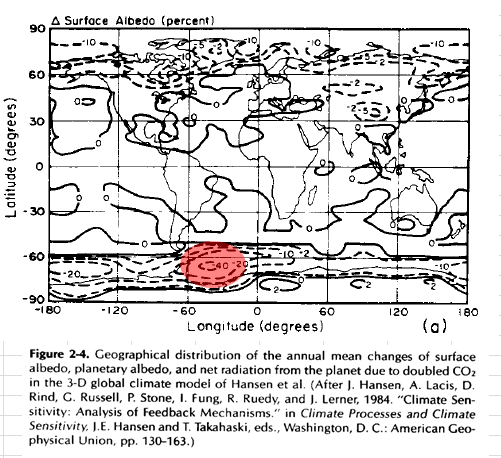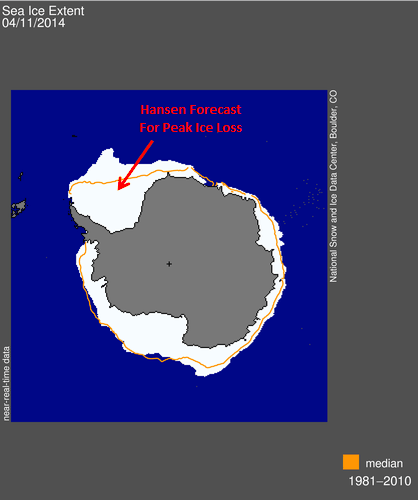James Hansen has made many forecasts over the last 30 years, with close to 0% success rate. Betting on the opposite of what he predicts, is almost a sure thing. Thirty years ago he forecast peak sea-ice loss (40%) in the Weddell Sea of Antarctica.
http://www.epa.gov/climatechange/effects/downloads/Challenge_chapter2.pdf
So how did that forecast work out? The Weddell Sea is where the peak sea ice gain has occurred. The exact opposite of what Hansen forecast.
http://nsidc.org/data/seaice_index/images/daily_images/S_daily_extent.png




Back in 1969, I was working at NCAR. One day one of scientists took me aside and said to me that I should watch out for James Hansen. He said that everything that Hansen does is wrong. True story.
Two years before Hansen thought that dust made Venus hot.
The story is true. Hansen already had 9 publications before this statement was made to me. See http://pubs.giss.nasa.gov/authors/jhansen.html
But Hansen was right about these. 😉
https://www.youtube.com/watch?v=OCmuATH2yzo
So we have peak ice in the Wendell sea, yet this “brilliant scientist” wrote a book about hos HIS penguins were going to be wiped out from loss of ice in that area. — Frasers penguisn
http://www.amazon.com/Frasers-Penguins-Journey-Future-Antarctica/dp/0805079424/ref=sr_1_1_title_1_har?s=books&ie=UTF8&qid=1397405561&sr=1-1&keywords=Fraser%27s+Penguins
Ok, but what he has to say now is different, and is clearly logical, like this just last year:
Just because we’ve gone from 250 to 400ppm and we’ve seen no change in sea level, or at least no change in the truly minimal rate of sea level rise, the point is that over 400ppm is the critical mass point, the point of no return. We will certainly go from a rate of perhaps a tenth of a meter per century to a rate of 100 meters a century, a 1000x increase in the rate of rise, because.
And it also makes perfect sense that it’s not about stopping the massive emissions of CO2 from China and India et al, but of instead reducing emissions by only a very minor amount by blocking the Keystone XL pipeline and Canadian oil development, because CO2 emitted from North America is much more damaging, because. That is why this quote does not represent somebody who has gone flat off his rocker:
https://www.youtube.com/watch?v=1uxfiuKB_R8
If earth turns into Venus as Jimbo says, and the ocean start to boil, and all liquid water on earth goes into the atmosphere, as Jimbo says, then rising sea levels are the least of our problems.
It sure gets you mad to listen to Hansen’s bs in that youtube. It’s hard to extract a compact quote out of all that garbage Hansen spews on the video, but I jotted this down:
“[we will likely see] the oceans begin to boil, and have a runaway greenhouse effect.” -James Hansen, NASA
Pure bs. In the past CO2 has gone as high as 7000ppm, and there was no runaway greenhouse. Now the NASA chief idiot and chief fear monger says that 450ppm could lead to runaway greenhouse effect. Criminal.
I’m trying to find Hansen’s bets on commodities futures.
Isolated areas marked “0” within areas marked “0” in the tropical ocean? Hansen was smoking something when he made that silly map.